
Finally! Ive been waiting for this thing to show up for 2 months. Searched high and low in @RGVaerialphotos photos 8 weeks straight hoping I would see signs of it before anyone else.
If you are confused at what this is or want to learn more about it check out the thread below
If you are confused at what this is or want to learn more about it check out the thread below
https://twitter.com/RGVaerialphotos/status/1462441724198981635
Before we start:
I had a feeling this would happen. It sucks to have to skip ahead in the Orbital Launch Mount series cuz its going to be impossible to keep the whole thing in one thread now. Might have to come up with a better way of organizing this stuff.
One more thing!
I had a feeling this would happen. It sucks to have to skip ahead in the Orbital Launch Mount series cuz its going to be impossible to keep the whole thing in one thread now. Might have to come up with a better way of organizing this stuff.
One more thing!

Should I post this entire explanation at one time? Or would yal rather see them as I finish each page?
I'll let yal decide while I grab some food. @RGVaerialphotos unexpected post forced me to skip lunch for this.
*FYI The first option will probably contain more errors*
I'll let yal decide while I grab some food. @RGVaerialphotos unexpected post forced me to skip lunch for this.
*FYI The first option will probably contain more errors*
Noted...lets compromise though.
If you consider yourself a true @LabPadre #nerdle or #StarshipAddict then you you might consider skipping to #5 or else this will be review for you.
If you have no idea what going on here. This should help.
If you consider yourself a true @LabPadre #nerdle or #StarshipAddict then you you might consider skipping to #5 or else this will be review for you.
If you have no idea what going on here. This should help.
1. Lets start with some introductions:
Meet @SpaceX's "4th" Stage 1 vehicle that they have given birth to in the last year. She is the most powerful Super-Heavy, Orbital Class Booster on the planet for... at least the next 2 months.
Meet @SpaceX's "4th" Stage 1 vehicle that they have given birth to in the last year. She is the most powerful Super-Heavy, Orbital Class Booster on the planet for... at least the next 2 months.

2. Engines:
As I mentioned, B4 has 29 of the most powerful and efficient engines ever created. Each of these Raptor engines start every launch off with a complete balanced breakfast consisting of Liquid Oxygen (LOX) and methane (CH4).

As I mentioned, B4 has 29 of the most powerful and efficient engines ever created. Each of these Raptor engines start every launch off with a complete balanced breakfast consisting of Liquid Oxygen (LOX) and methane (CH4).
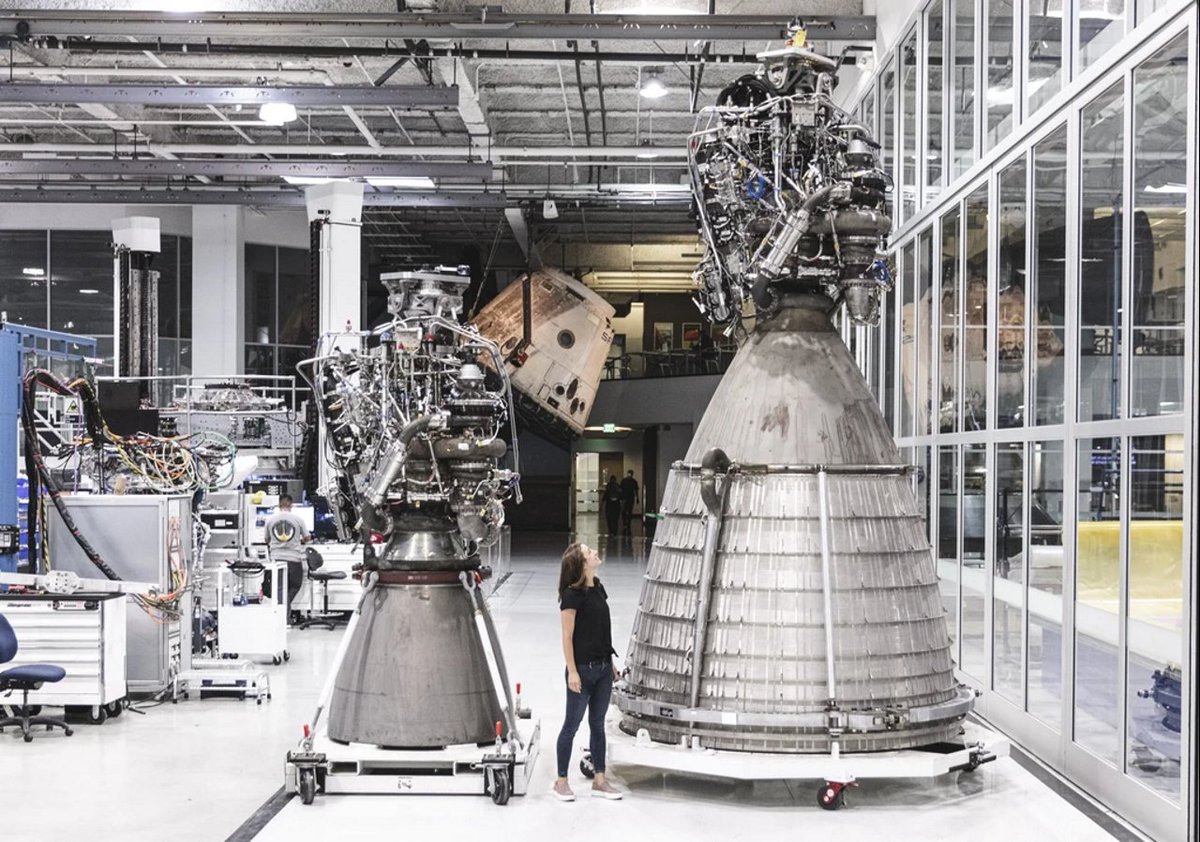
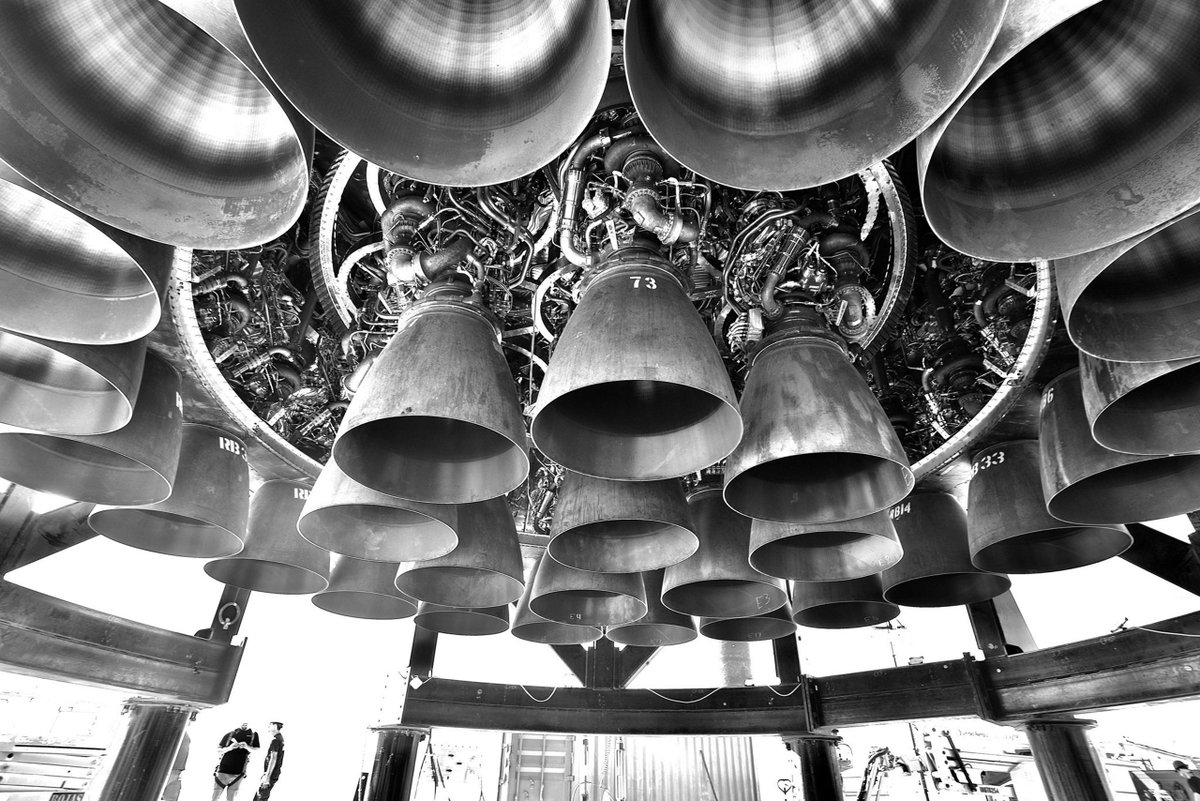
3. Transportation:
The booster has a special transport stand that allows it to be transported vertically on the highway. @SpaceX only has 2 of these which means they can only have 2 fully stacked boosters at a time currently.
@RGVaerialphotos

The booster has a special transport stand that allows it to be transported vertically on the highway. @SpaceX only has 2 of these which means they can only have 2 fully stacked boosters at a time currently.
@RGVaerialphotos


4. It has 20 hydraulic clamps that have the lucky job of stopping this monster from getting blown over in the wind on the way to its destination.
I think I will save the fun parts for tomorrow after I get off work. In the meantime check these out


I think I will save the fun parts for tomorrow after I get off work. In the meantime check these out

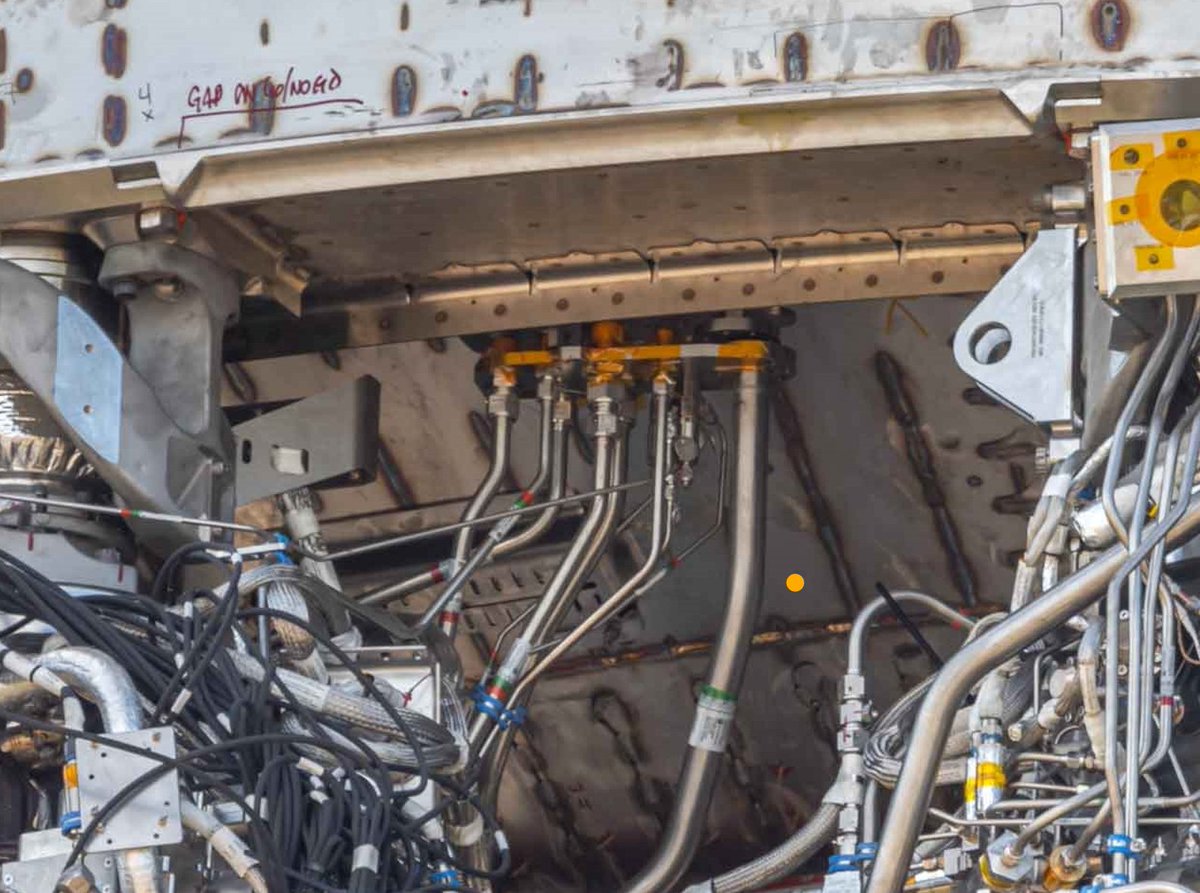
Happy Tuesday #StarshipAddicts This took me longer than was hoping for. Swapping to a new computer in the middle kind of sucked. I think we are good now.... 

5. Transportation:
This video by @considercosmos gives you a really good idea of what it looks like when you transport a 23 story rocket down HW4. If you have VR goggles its absolutely insane. Highly recommend checking it out.
This video by @considercosmos gives you a really good idea of what it looks like when you transport a 23 story rocket down HW4. If you have VR goggles its absolutely insane. Highly recommend checking it out.
https://twitter.com/considercosmos/status/1454240427914235909?s=20
6. Booster Clamps:
This view of the clamps tells a lot of stories. you can see the red squares on the actual part of the clamp that is responsible for locking onto to the lip going around the edge of the vehicle...(see alt) @RGVaerialphotos
This view of the clamps tells a lot of stories. you can see the red squares on the actual part of the clamp that is responsible for locking onto to the lip going around the edge of the vehicle...(see alt) @RGVaerialphotos
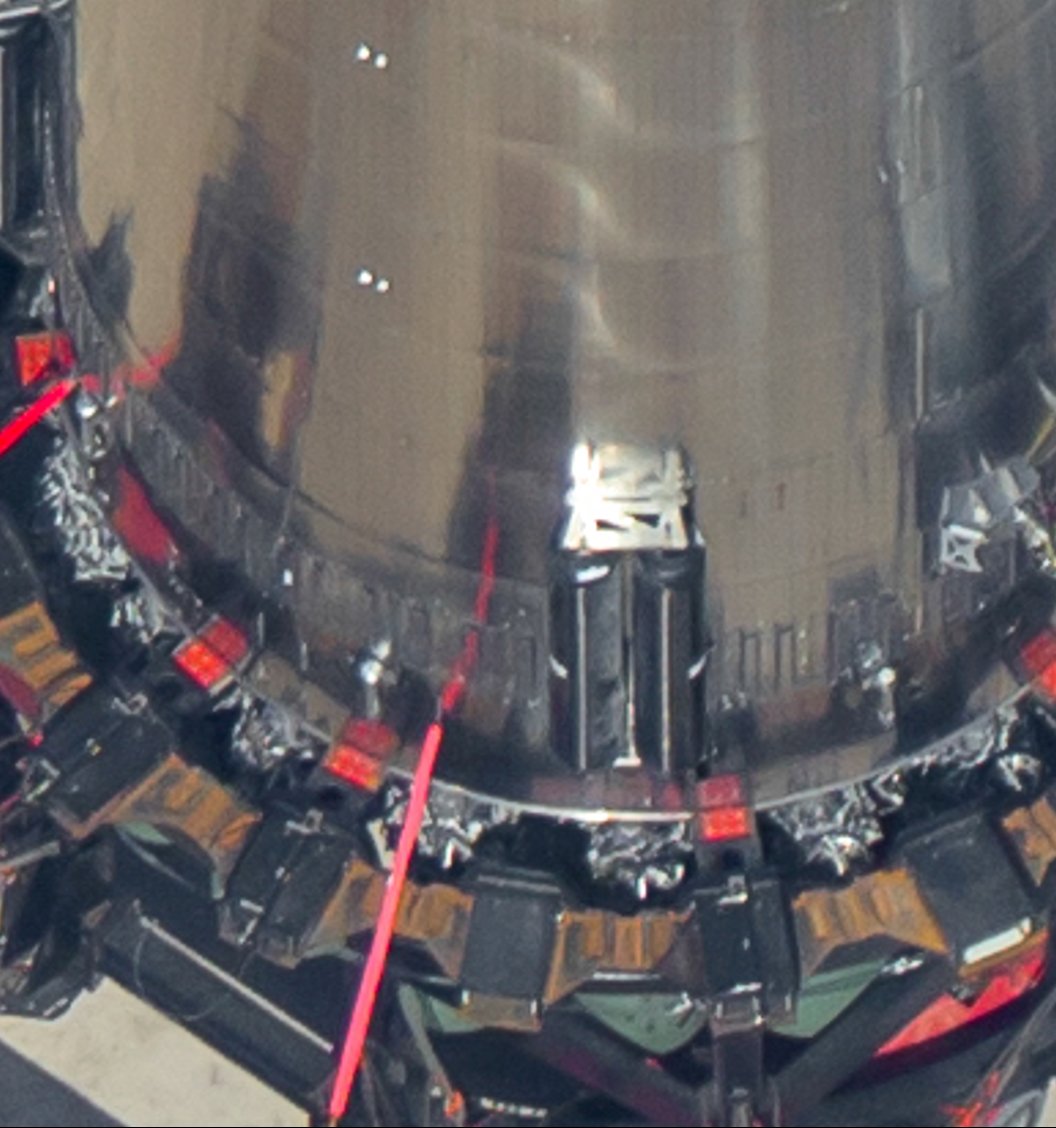
7. Counterweights:
CW's are used to stabilize the booster as it moves down HW4, with how bumpy the highway was & the effects of upper atmospheric wind-shear, this was definitely super-necessary lol. (alt)
CW's are used to stabilize the booster as it moves down HW4, with how bumpy the highway was & the effects of upper atmospheric wind-shear, this was definitely super-necessary lol. (alt)

8. Stabilizer Bar:
There are one of these in the front and the back for extra lateral stability. If u ever see these on top of the #SPMT's moving towards the #HighBay, you might want to hop on the @LabPadre #SentinelCam because #B5 might be preparing to go on a walk.
There are one of these in the front and the back for extra lateral stability. If u ever see these on top of the #SPMT's moving towards the #HighBay, you might want to hop on the @LabPadre #SentinelCam because #B5 might be preparing to go on a walk.

9. Compressor:
Sitting on top of the CW's. This compressor keeps the #LOX and #CH4 tanks pressurized. I don't think there are too many occasions where you will ever see a fully stacked #SuperHeavy that isn't pressurized.
Sitting on top of the CW's. This compressor keeps the #LOX and #CH4 tanks pressurized. I don't think there are too many occasions where you will ever see a fully stacked #SuperHeavy that isn't pressurized.

10. BQD:
In the very front of the booster there is this massive panel. Spotted sunbathing on a nice clear day by @StarshipGazer. It might not look like much but this thing has a lot going on. All the protective coverings makes it a bit difficult to see what happening.
In the very front of the booster there is this massive panel. Spotted sunbathing on a nice clear day by @StarshipGazer. It might not look like much but this thing has a lot going on. All the protective coverings makes it a bit difficult to see what happening.

11. As @BingoBoca has pointed out. There is clearly a lot going on here. I don't think we are ready to get this detailed yet. Soon though. Lets see what it looks like on the other side. Its not exact but its the closest I could find in a pinch. 

2. @FutureJurvetson shows what one of these QD ports looks like from the inside. The main differences between this and the one above are this one is from a #Starship. And THIS is what it looks like following a mid-air stroke by #SN8 during its landing attempt 

Messed my numbering up back there smh its too early.
13. For several weeks I was scanning aerial shots trying to find where the male end of booster QD was hiding. Finally @LabPadre's #RoverCam caught it being delivered not too long before shift change!
13. For several weeks I was scanning aerial shots trying to find where the male end of booster QD was hiding. Finally @LabPadre's #RoverCam caught it being delivered not too long before shift change!

14. Ive never asked him but, I have a feeling @StarshipGazer lives a double life as a wedding photographer because these angles are just too perfect for telling love stories. Just a lonely table, looking to mate with a booster w/ alignment pins in all four corners for proper seal 





15. Hey everyone! I want to take a step back and look at all the different functions of the launch table. We will look at these operations in the order that they take place in starting with the pre-pressurization system for the Super Heavy Booster
16. When unpressurised, its often easy to tell because of the dents that appear in the side of the tank. In the video below you can see what it looks like when they pressurize the tank.
https://twitter.com/NASASpaceflight/status/1425846804223074304?s=20
17. This video from @LabPadre is an example of how incorrect tank pressures can cause structural instability in a tank of this size. It is important for these tanks to remain pressurized while they are being transported. #SN3 #RIP
18. Lets take a look at how #SpaceX keeps the booster pressurized during transporation.
Original Images by @StarshipGazer & @RGVaerialphotos

Original Images by @StarshipGazer & @RGVaerialphotos


19. In order to maintain structural integrity during the lift, a few things are required.
Original Images by @RGVaerialphotos

Original Images by @RGVaerialphotos


21. In order to trace the pre-press lines back to their origin we must start from the QD Port and work our way backwards.
@RGVaerialphotos

@RGVaerialphotos


22. Moving further down to the massive valve control panel for the pre-pressurization system. The path continues all the way down the legs. We will talk about the different configurations that are available here later once it is completed.
#Starbase #SpaceX #Launchpad

#Starbase #SpaceX #Launchpad
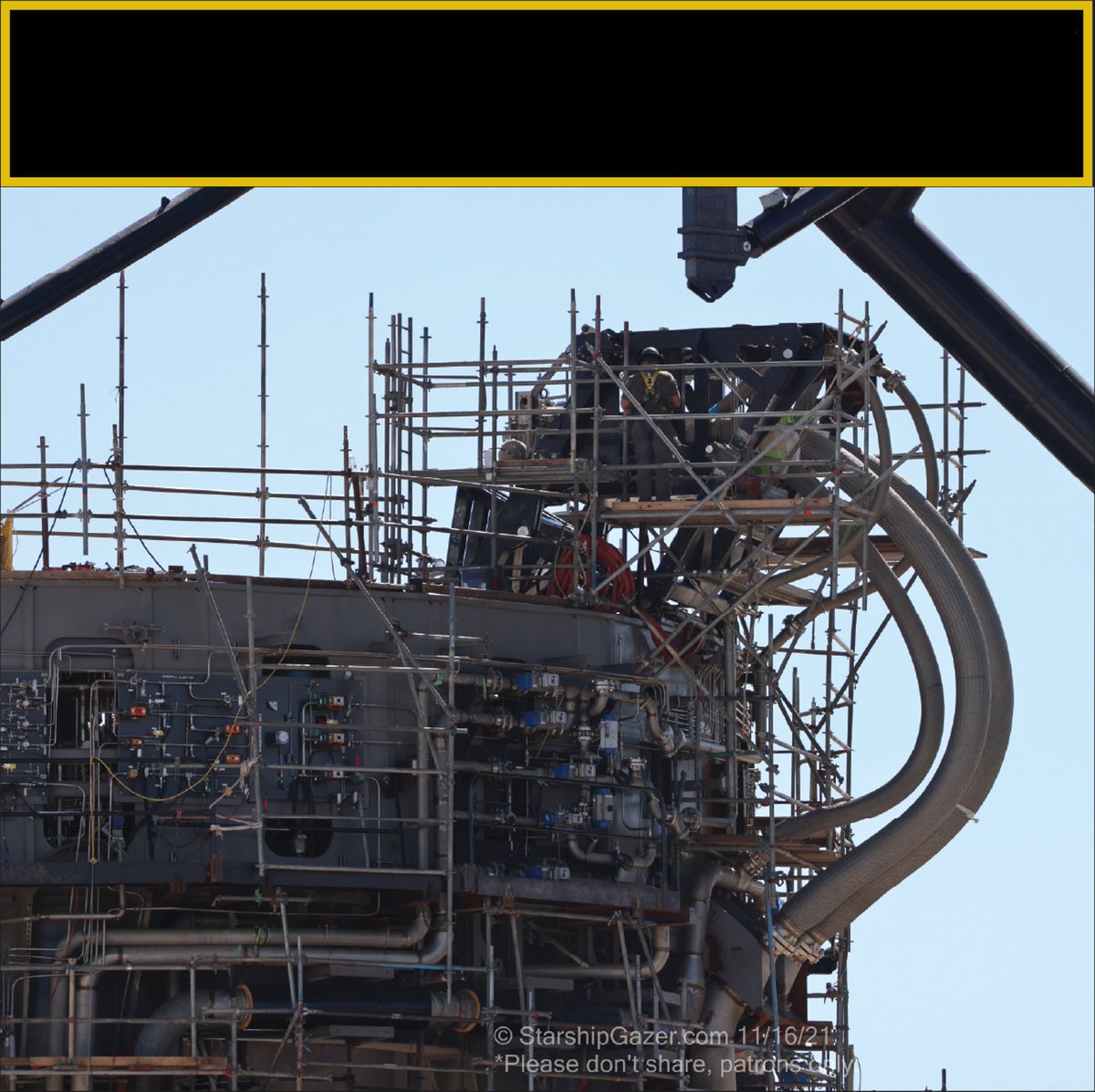

23. Pausing for a moment of #speculation...
The two pipes that aren't connected yet in the previous picture (shown with red circles) will be routed inside the table to supply high pressure GOX/GN2 and GCH4 to the outer 20 #Raptor engines.
#Spacex #OLM #OLIT #Starbase #Starship
The two pipes that aren't connected yet in the previous picture (shown with red circles) will be routed inside the table to supply high pressure GOX/GN2 and GCH4 to the outer 20 #Raptor engines.
#Spacex #OLM #OLIT #Starbase #Starship
24. TBC...
We need more history about the launch table before I explain how and why #SpaceX will use the #OrbitalLaunchMount to handle the ignition of the outer 20 #RaptorBoost engines. In the meantime, here is a hint of where the GCH4 is supplied from.
@RGVaerialphotos

We need more history about the launch table before I explain how and why #SpaceX will use the #OrbitalLaunchMount to handle the ignition of the outer 20 #RaptorBoost engines. In the meantime, here is a hint of where the GCH4 is supplied from.
@RGVaerialphotos


25. Should I finish my explanation of the construction of the launch table first, or would you rather hear about how outer 20 engines are ignited?? Option 1 takes longer but is far more educational
• • •
Missing some Tweet in this thread? You can try to
force a refresh








